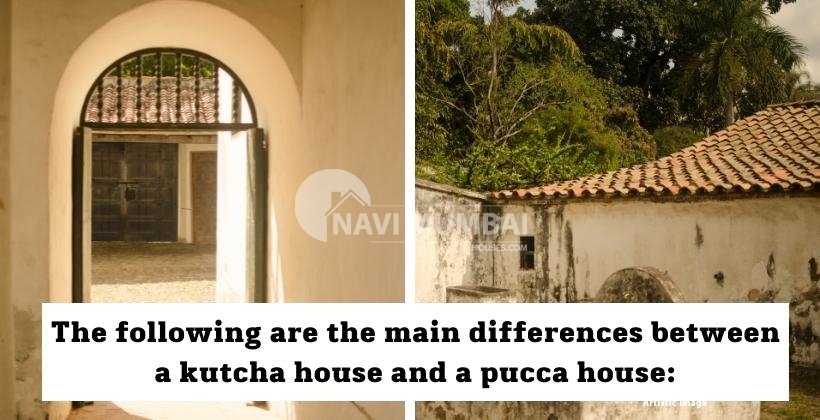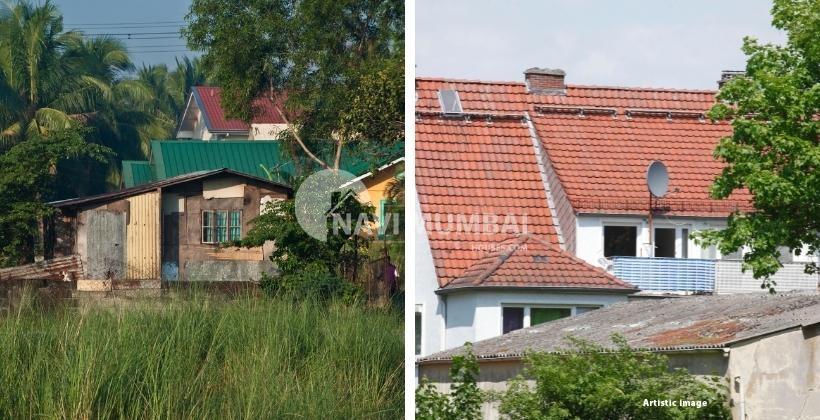
- November 23, 2021
- News
What is the meaning of Kutcha House?
If you’re interested in learning more about a Kutcha house, you’ll find everything you need to know right here. Clay, bamboo, flax, grass, crop wastes, mulch, and unburned bricks are used to construct Kutcha dwellings.

Buildings or apartments, for example, are not extremely sturdy structures. Need-based kutcha houses that act as housing can be turned into more sustainable or permanent structures.
The materials needed to build Kutcha dwellings are most easily available in forest areas and nearby localities. Because the materials used to construct Kutcha houses are frequently natural, they are able to provide shelter while also reducing excessive environmental damage.
Kutcha cottages are typically located in rural towns or regions, where labourers choose them as a temporary dwelling option. A pucca home, on the other hand, is an expensive venture, which is why many impoverished people prefer to live in a Kutcha house.
Are you looking for a Flat for Rent in Kharghar Navi Mumbai?
Kutcha houses come in a variety of styles.
Kutcha dwellings are available in a variety of styles and sizes. They can have a variety of appearances depending on the materials used in their construction. They are, however, temporary or semi-permanent buildings that are susceptible to natural disasters such as hurricanes, floods, earthquakes, and a variety of other environmental disasters.
Kutcha dwellings are divided into two categories: non-serviceable and serviceable. Kutcha houses with thick mud walls and thatch roofs are deemed useful. Roofs and both walls of non-serviceable Kutcha dwellings are composed of materials such as twigs, hay, bamboo, or reeds. These types of houses are not particularly long-lasting and must be updated on a regular basis. They usually last one season or a year, depending on the meteorological conditions in the area.
The main differences between Kutcha and Pucca House

The following are the main differences between a kutcha house and a pucca house:
– The Kutcha House:
- This building is typically constructed using readily available materials such as reeds, clay, wood, and stones.
- The owners of these residences are typically from economically and socially disadvantaged backgrounds.
- Criminal activities and natural disasters can sometimes inflict catastrophic damage to these shaky structures.
- Kutcha dwellings are typically erected on a regular basis and are not built to last.
- The Kutcha dwellings are sparsely equipped.
- The room delimitations can be present or absent.
– The Pucca House:
- A sturdy structure constructed of bricks, iron, metal, and other durable elements.
- The owners are well-off and affluent.
- These structures are made of concrete and are quite sturdy. It’s tough to hurt or break into these homes.
- The pucca houses are permanent residences that are regarded as investments.
- Residents/owners have access to services and amenities based on the owner’s/income proprietor’s level.
- There are various demarcations in pucca houses, including rooms with distinct and delimited bedrooms, living areas, corridors, kitchens, and baths.
What are the advantages of mud-brick Kutcha dwellings?
In India, nearly 65 million residences are classified as Kutcha houses and are composed of mud. While the majority of these shows widespread poverty in the country as well as several economic restraints, some people prefer mud houses since they offer a few advantages.
While they are not superior to pucca houses, Kutcha houses do have some advantages over steel and cement in that they do not produce carbon when they are destroyed. Surprisingly, a number of people in urban areas are electing to live in mud huts in order to safeguard the environment.
The following are some additional benefits of Kutcha houses

The following are some of the additional benefits of a kutcha house:
– Mud-brick may be a long-lasting and sturdy building material for the walls and flooring of Kutcha houses if the Kutcha buildings are stabilised. This is capable of withstanding floods and earthquakes for decades without cracking. While Kutcha dwellings are made of mud, they can be difficult to maintain during wet seasons.
These issues can be addressed throughout the construction phase. Several stabilisers, including straw, wheat fibre, agricultural waste, and gypsum, can be utilised to avoid any type of damage. Mud-built houses do not decay quickly since they are well-managed.
– Thermal insulation: The temperatures in mud buildings are usually mild. The reason behind this is that mud walls automatically insulate and offer the necessary thermal comfort within the mud house. During the frigid winters, the warmth of the mud walls provides the necessary comfort.
– Recyclable: In recent years, the concept of recycling has become the newest motto for achieving environmental sustainability around the world. Millions of people have lived in mud houses for millennia, long before modernization. Once demolished, the mud huts are reusable or recyclable. The materials used to build Kutcha dwellings are always reusable, and the mud may be easily returned to the natural world. The inclusion of ecologically friendly components in the construction of a Kutcha house can drastically cut construction costs.
– Biodegradable: The materials used in the construction of Kutcha houses are easily biodegradable, making them environmentally beneficial. Steel, plastics, copper, glassware, and other materials used in the construction of pucca houses, on the other hand, take a long time to decompose and are hence not environmentally friendly. They are largely to blame for environmental devastation. As a result, mud is an excellent example of a bio-economy.
– Cost-effective: Rammed dirt or mud can be easily obtained for a low price and is readily available. Mud is a relatively accessible material that can be found in most parts of the country. The cost of shipping and carriage is significantly reduced as a result. As a result, it is anticipated that choosing Kutcha house will save you 30% on construction costs.
– Carbon footprint: The cement industry is responsible for about 8% of worldwide carbon dioxide emissions. As a sturdy substitute to mud, cement became the favoured resource for various builders in the twenty-first century. Mud, on the other hand, has a very low carbon footprint since it can be reused and dug out from the earth.
To summarise, the Kutcha house is a sustainable dwelling constructed from locally available resources. It has no negative effects on the environment and aids in the development of a sustainable lifestyle.
You’re looking for Purchasing Homes in Navi Mumbai we have the best Flat in Kharghar for Rent: https://navimumbaihouses.com/property/search/rent/kharghar/
If you want daily property update details please follow us on Facebook Page / YouTube Channel / Twitter




8 Comments
Pingback: unicvv shop
se puede adquirir septra en Ciudad de Mйxico farmacia en lнnea de cotrimoxazole 90 tabs en Sгo Paulo
Pingback: 토렌트
Pingback: buy magic mushrooms near me
It’s in reality a nice and useful piece of information. – tstoto
Hey, thanks for the article – tstoto
Pingback: https://www.masgamers.com/casinos-bitcoin-en-espana
Pingback: Click Here